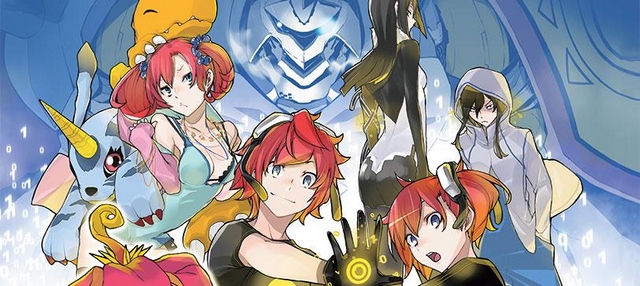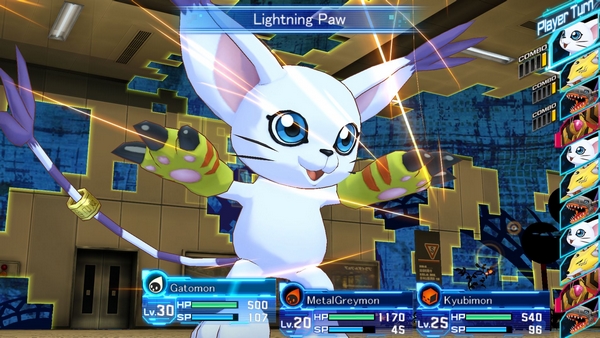
The Digimon (Digital Monsters) franchise began its popularity in the late 1990s. Over the years, we’ve seen a fair share of game and anime releases. In celebration of Digimon’s 15th year anniversary, Digimon Story: Cyber Sleuth (DSCS) was released in Japan back in 2015 for PlayStation 4 and PlayStation Vita.
It was well received overseas and then Western fans asked Bandai Namco if we could see a release. Thanks to a petition signed by over 65k fans, DSCS was released this past February. So, is DSCS a game that only Digimon fans enjoy or can any fan of JRPGs find something worthwhile? Here’s our spoiler-free review to answer both.
Detective Fiction
Digimon Story: Cyber Sleuth doesn’t require any knowledge of the anime or past games. But is is important to note that the game’s voice-work is in Japanese and it is subtitled English. It’s a tale involving a young man (or young lady depending on your choice) that get’s caught up in a near-future mystery. A local gumshoe takes our main character under her wing, they become her assistant beginning a career as a “cyber sleuth”. With an array of special skills you’ll find clues, solve cases, and reveal secrets for the people of Tokyo and digital life-form alike.
The narrative plays out across 20 well-paced chapters featuring a colorful cast of characters. If you’re familiar with the cyberpunk genre then the narrative here isn’t entirely groundbreaking. However, the story does feature a healthy dose of mystery and writing. The result is a memorable and unique experience that lasts for 40-50 hours.

Gameplay Trifecta
The overall gameplay of DSCS falls into three categories: detective work, battling, and training digi-buddies. As a detective you’ll be traversing Tokyo, cyberspace, and digital dungeons for cases. Cases will either involve locating objects (or people/monsters), fighting hackers, and some other possible *ahem* “barely legal” activities. If you ever happen to forget case details, you can always refresh yourself by talking to NPCs or looking at your case profile. Also, the main story only progresses as you see fit. So you can always take your time with extra cases to expand the roster, get more items, and money.
Next, there’s the matter of battle. The details of battle are surprisingly deep but overtime you’ll get the hang of it. First and foremost encounters are random which can be seen as an old mechanic by some. Battles are turn-based (also considered dated) but fast paced. How fast you can dispatch foes hinges upon your command of the rock-paper-scissors weakness system of the game.

I’ll try to keep this brief and uncomplicated as possible. Beasts fall into types and elemental affinities. Data types are effective against vaccine types and vaccine types beat virus types. A fire attack is effective against a monster with a plant affinity. So what does this mean? Attacks can be at most 3x as effective in a good match or barely effective in a bad one. Unless you exploit types and elements properly, a quick and painless fight can become long and excruciating.
The final and most time consuming part of the gameplay experience is raising your team. With over 200 Digimon there’s a lot of choices available. The Digilab is where you’ll hatch creatures you’ve encountered in the wild, digivolve them, and more. To help with training, you can place your critters in a Digifarm where they can gain experience and level up their stats.
This will allow you go about the story or side quests while you’ll have non-party participants gaining experience to be champions later. The game will remind you (in boss fights no less) that having fully evolved versions of your party is a necessity. To access stronger evolved versions of the little guys certain requirements need to be met. These requirements include specific stats, story progression, and a variety of other things.

Aesthetics
Visually speaking, DSCS is pretty easy on the eyes. The game is perpetually bright and stands out. A good example is the digital environments. The game mixes a cel-shaded design for digital space with 3D character models. The human characters and monsters are equally beautiful in battle and cutscenes. The amazing art is thanks in part to designs by Oh! Great (Air Gear, Tenjho Tenge) and Suzuhito Yasuda (Devil Survivor 1 & 2, Gundam Build Fighters)
Finally, there’s the impressive soundtrack that’s a varied mix of jazz, techno, 8 bit, ambiance and more. Nearly all the tunes are fitting, contemporary, and natural (especially the digital tunes). The soundtrack is brought to you by Masafumi Takada. If you’ve never heard of him his works include Dangan Ronpa 1 & 2, No More Heroes, and Killer 7.
Case Conclusion
In short, it’s a good JRPG and one you should give your attention to if you’re looking to play something different. We often don’t have games that are cyber punk in nature and it’s rare that it’s a detective story as well. The game is packed with enough content to keep you engaged. I haven’t even mentioned that there are post game challenges, a new game plus mode, local/online battle, and arena challenges as well. Ultimately, DSCS is a game any lover of JRPGs will enjoy, Digimon fandom isn’t required.







Published: Mar 18, 2016 08:24 am